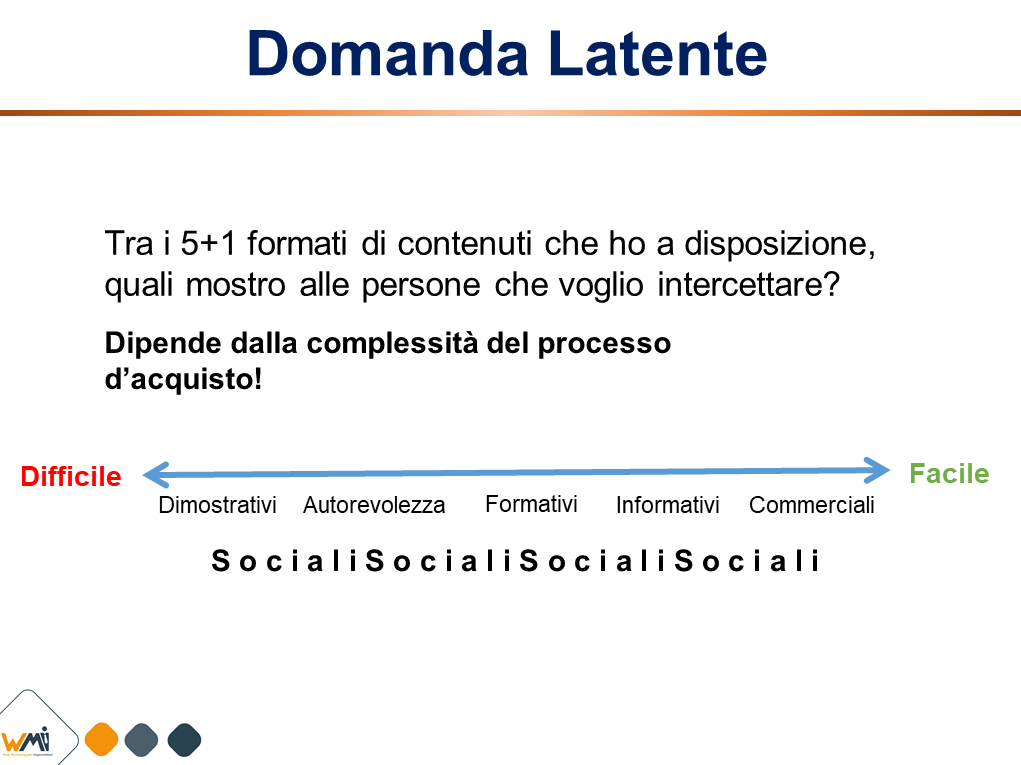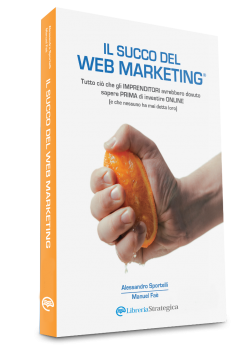Definition: Latent Demand is the set of all the people who are NOT directly looking for a product/service at a given time, but may need it or be interested in it based on personal characteristics (profession, problems, tastes, hobbies, etc.).
When intercepting new potential customers, the first question you have to ask you is: “Is there anyone who does not know my product/service (so they are not looking for it yet), but might be interested in it?

Together with my friend and colleague Alessandro Sportelli, we have analyzed over the years the concepts of Latent Demand and Effective Demand to systematize them inside the ConnectionFunnel®.
The ConnectionFunnel® is a working method aimed at developing effective web marketing strategies for any company or professional. The method is always the same — it is the declination of the strategy that is different and depends on the analysis of the buying process of your target.
If you want to know more about the ConnectionFunnel® Method, click here.
In 2016, we collected and further analyzed the concepts of Latent Demand and Effective Demand within the book “Il Succo del Web Marketing” (published by Libreria Strategica). The aim of the book is to make entrepreneurs aware of a complex world — that of web marketing — which is not always easy to understand. Strategic web marketing is an opportunity to be seized, but first of all you need to understand the basics.
Since 2018, “Domanda Latente” (Latent Demand) is a registered trademark of WMI srl.
As you may have understood, when we speak of Latent Demand we are at the furthest point from the purchase because our potential customers do not yet know us. Therefore, intercepting Latent Demand means implementing several actions that allow us to be discovered by those who are not yet looking for us but might be interested in our product/service.
When we talk about DISCOVERY, we mean the moment when the user sees, reads or hears (both online and offline) for the first time about a product, service, brand, company, professional or discovers a potential problem. At this stage, the attitude of the potential customer is essentially passive.

As we have seen, the first question to ask yourself is: “Are there people who do not know my product/service (so they are not looking for it), but might be interested in it?
Remember: A potential customer cannot be interested in something if he or she doesn’t know it exists.
If the answer is yes, the second question is: “How can I intercept these potential customers?”
In order to define the actions to be taken to intercept the Latent Demand, we must first answer 4 questions:
In order to answer these questions, you need to study the buying process of your customers.
The BUYING PROCESS is the set of actions that your customer carries out — online and offline — from when he or she discovers and/or searches for your product to when he or she buys it.
Depending on the complexity of the buying process, and the stage the user is at, we can show our potential customers different types of content:
The longer and more complex the buying process is, the more it is necessary to start with the demonstrative — or possibly educational — contents and then move on to the informative and commercial ones. The social contents can — or rather must — be used along the whole buying process.
These can influence the entire buying process. For this reason, it is also important to define procedures to collect them (especially with reference to the reviews of those who have already tried your product/service).

Thanks to the ability to accurately profile the target audience, the world’s most popular social network is certainly one of the channels to be used to intercept potential customers. However, this does not mean that it is the right choice in all cases. Like other tools, Facebook may be part of a web marketing plan designed for specific objectives and may assume more or less importance depending on the case.
Through what are commonly called banners, we can make our message appear on certain websites or on certain youtube videos and thus stimulate latent demand.
Being present with our messages on portals or communities of specific sectors can be a way to be discovered by target users.
Apart from Facebook, there are other social channels through which we can convey our message in a targeted way (Instagram, Linkedin, Twitter, Tiktok, ecc).
TV, radio, flyers, billboards and all forms of “classic” advertising are another great channel to intercept those who are not looking for a specific product/service at that time, but might be interested.
IMPORTANT: as they were born, tools can die over time. This is why your customer acquisition strategy must not be based on a single tool and must be free from the natural evolution of the web.
Your web marketing strategy must be based on the analysis of your customers’ buying process. Once you have thoroughly studied and understood this, you will be able to assess whether a tool is right for you or whether you can find alternatives.

You can intercept two types of demand: Latent Demand and Effective Demand.
The Effective Demand is the exact opposite of the Latent Demand, i.e. it refers to that set of people who are already looking for a product/service or a solution to a problem/desire at a given time. In this case, the attitude of the potential customer is active.
Stimulating the Latent Demand can give rise to a new Effective Demand. After discovering us, the user can express interest in our product/service and start searching for it on search engines.
This also happens as a result of the actions of our friends: if a friend of mine buys a product, I could start to be interested in that product too and start searching for it.
If you want to learn more about the concept of Effective Demand, click here.
IMPORTANT: What has been said so far only applies if you have structured yourself for everything else first — for example, you already have a system to intercept the Effective Demand, you already have a system to manage connections once you have acquired the contacts, etc. Otherwise, intercepting the Latent Demand may prove useless. The risk is that once you attract new potential customers, you will not know where to send or how to manage them and therefore you will lose them.

3Aurea sas di Manuel Faè e C. - P. IVA: 04601570262